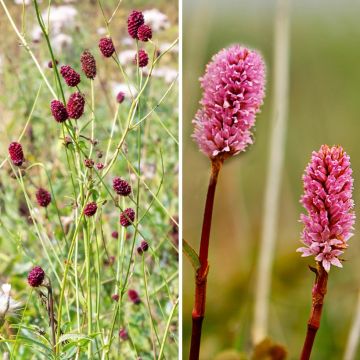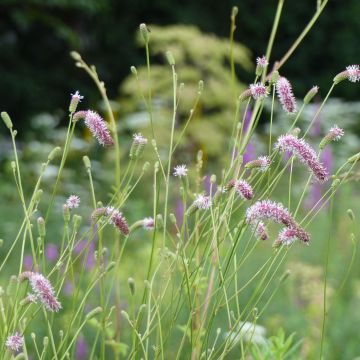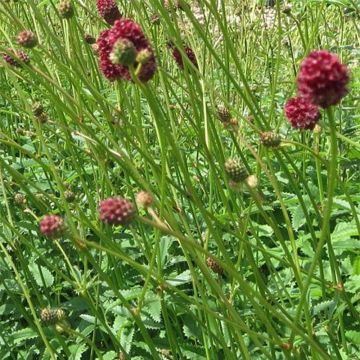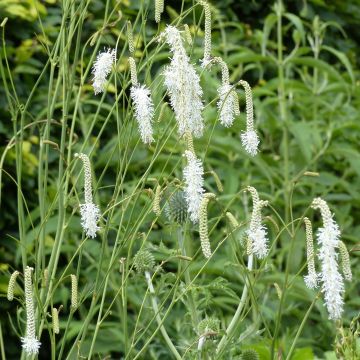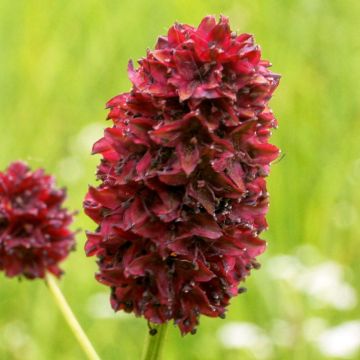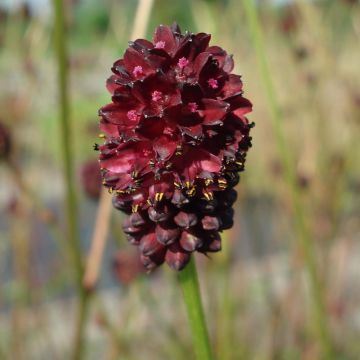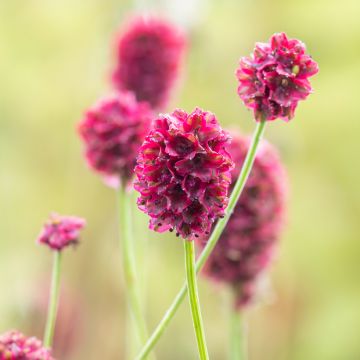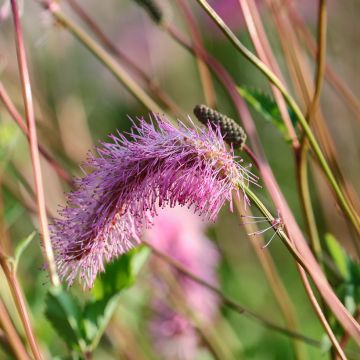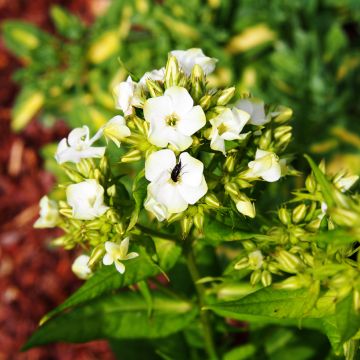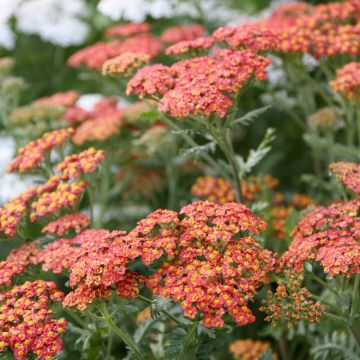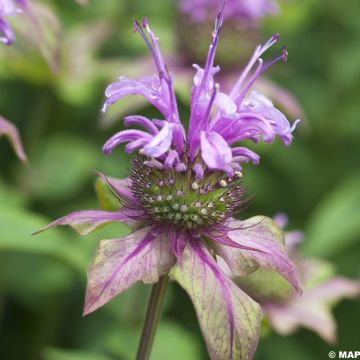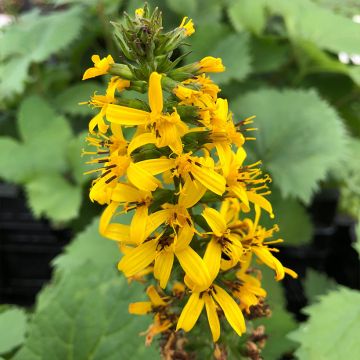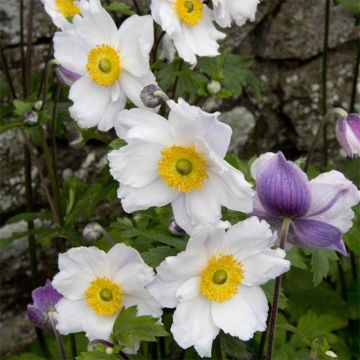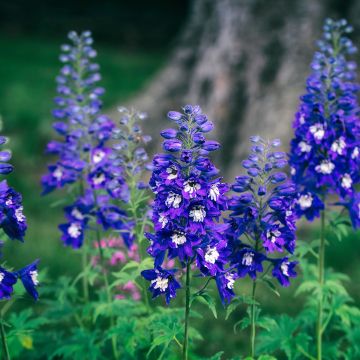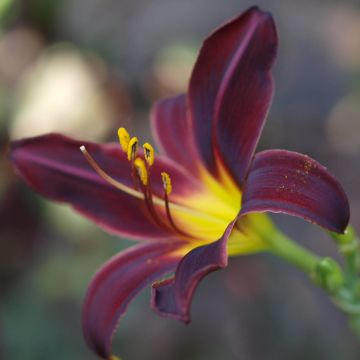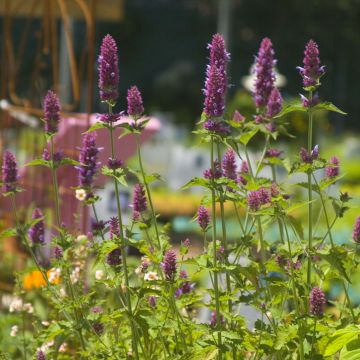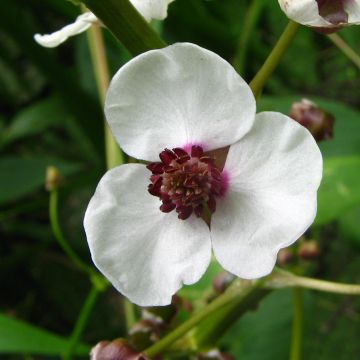

Sanguisorba tenuifolia Cangshan Cranberry
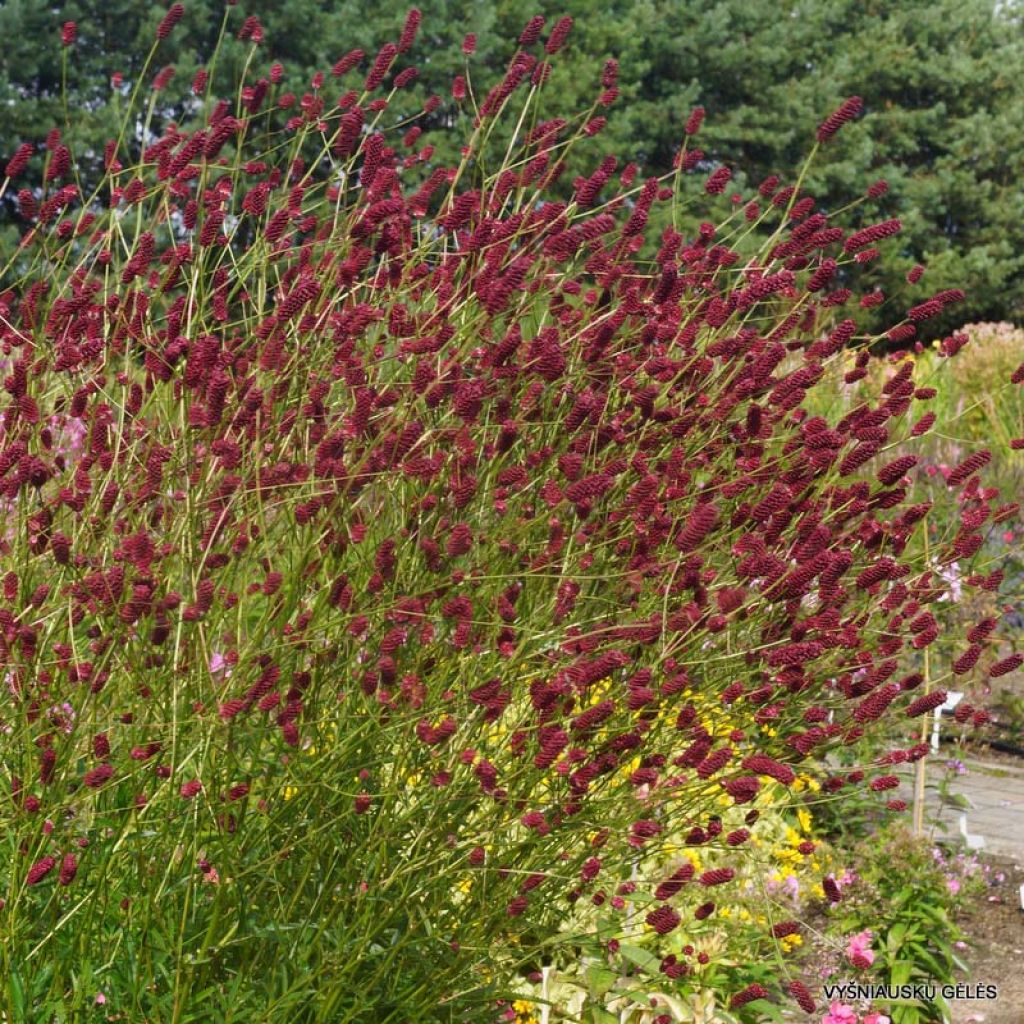

Sanguisorba tenuifolia Cangshan Cranberry
Sanguisorba tenuifolia Cangshan Cranberry
Sanguisorba tenuifolia Cangshan Cranberry
Chinese Burnet, Oriental Burnet, Slender Burnet
This item cannot be shipped to the selected country
Delivery charge from €5.90
More information
Schedule delivery date,
and select date in basket
This plant carries a 12 months recovery warranty
More information
We guarantee the quality of our plants for a full growing cycle, and will replace at our expense any plant that fails to recover under normal climatic and planting conditions.
From €5.90 for pickup delivery and €6.90 for home delivery
Express home delivery from €8.90.
Does this plant fit my garden?
Set up your Plantfit profile →
Description
The Sanguisorba tenuifolia 'Cangshan Cranberry' is a variety of burnet discovered in the Chinese province of Yunnan in 1996. It stands out with its tall reddish stems exceeding the size of a man, its spikes of burgundy flowers, and its finely carved foliage bordered in red. This vigorous perennial is reminiscent of some ornamental grasses with which it harmonizes perfectly. It blooms in late summer, adding a touch of wild poetry to sunny flower beds, while animating them with a vertical and flexible movement.
The Sanguisorba tenuifolia is a plant native to Japan, China, and Mongolia, and belongs to the Rosaceae family, just like other roses. The cultivar 'Cangshan Cranberry' is a herbaceous and rhizomatous perennial plant, non-invasive, which develops from a vigorous stump. It forms a clump of 1.80 m (6ft) to 2 m (7ft) in height when flowering, 50-60 cm (20-24in) in width, with rapid growth. It spreads slowly to form beautiful small hedges. Between August-September, tall red-tinted floral spikes emerge from the foliage, carrying at their tip small spikes of 5 to 8 cm (2 to 3in) in length, in the shape of brushes, adorned with cylindrical flowers of a somewhat dull red that take on a frayed appearance when fully bloomed. The faded inflorescences remain decorative for a long time. This flowering gracefully falls above a finely cut foliage, with a bluish-green colour tinged with red at the edges, on which rain forms beads. The leaves are divided into 11 to 19 leaflets, oblong, with regularly dentate margins. The vegetation of this burnet dries up in winter and restarts in spring.
The Sanguisorba tenuifolia Cangshan Cranberry is a very beautiful plant, very airy, and is undoubtedly one of the most beautiful burnets. It thrives at the water's edge, but in well-drained soil. It has the advantage of withstanding wind well, which allows it to be installed at the front of shrub borders or large perennials exposed to drafts. For a wild and refined effect, it can be associated with Miscanthus sinensis var. condensatus 'Cosmopolitan' or Calamagrostis 'Karl Foerster'. It will accompany, with lightness, the equally poetic flowering of Dierama pulcherrima, Japanese anemones, Aster, Polygonum orientale, Campanula lactiflora, Veronicastrum.
Report an error about the product description
Sanguisorba tenuifolia Cangshan Cranberry in pictures
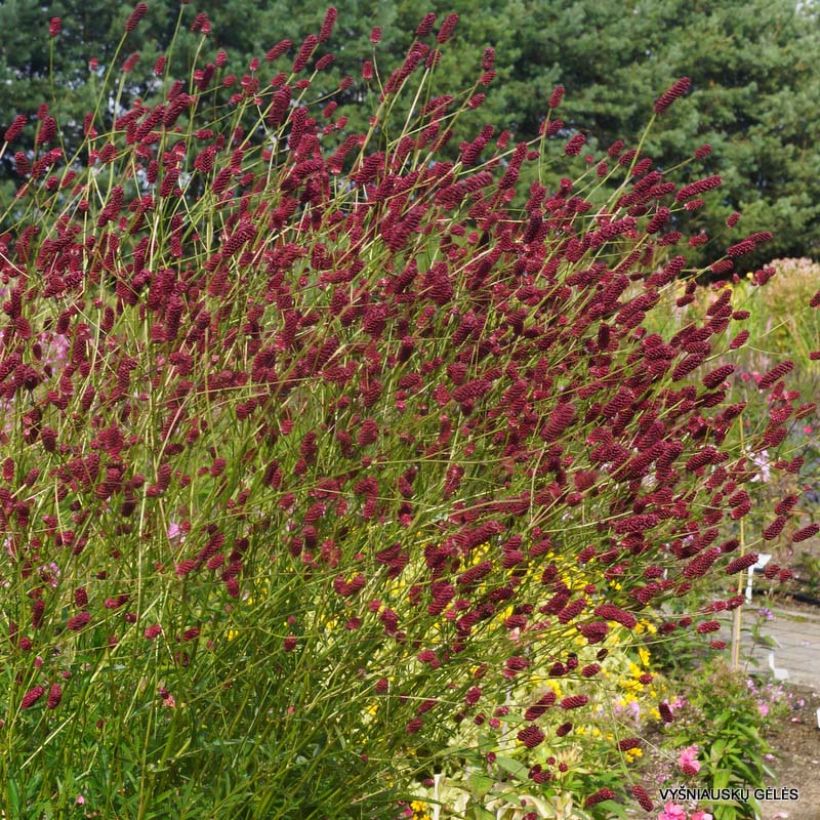

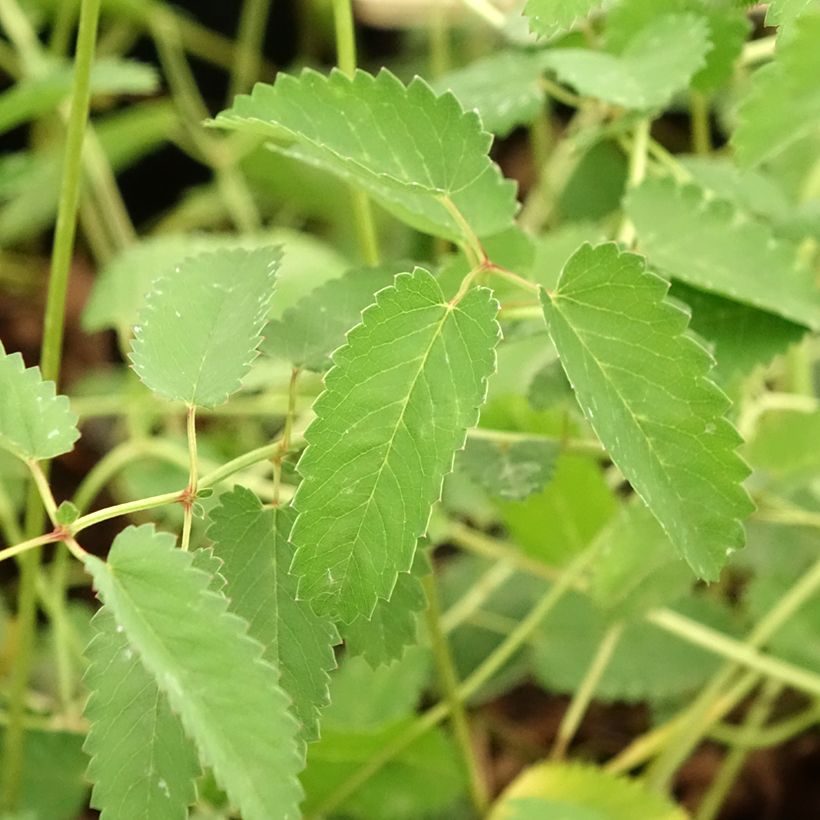

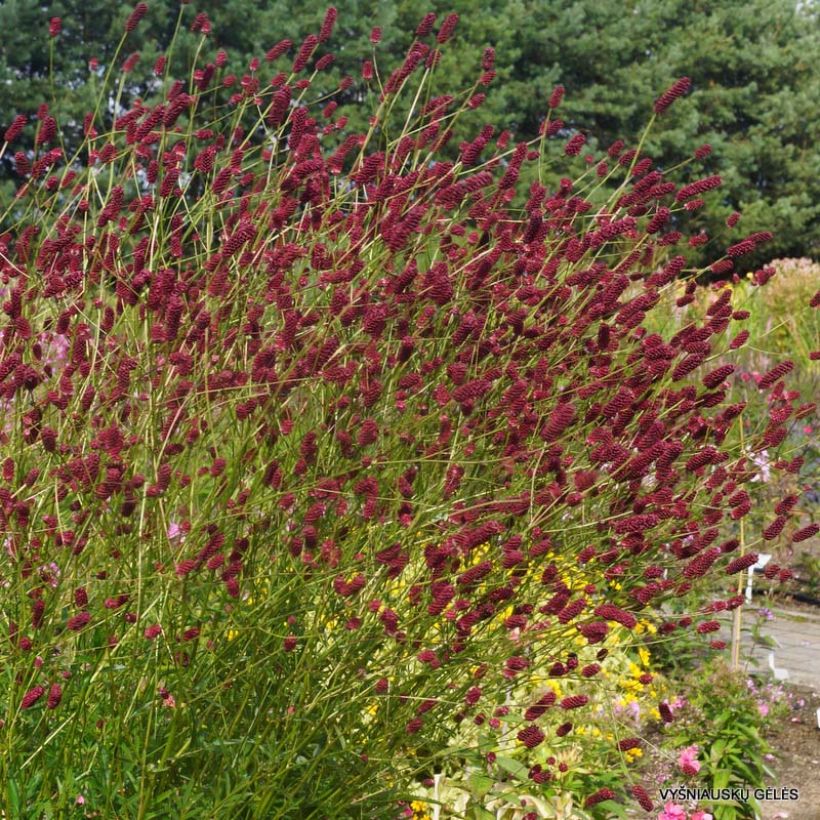

Flowering
Foliage
Plant habit
Botanical data
Sanguisorba
tenuifolia
Cangshan Cranberry
Rosaceae
Chinese Burnet, Oriental Burnet, Slender Burnet
Cultivar or hybrid
Other Sanguisorba
Planting and care
Sanguisorba tenuifolia 'Cangshan Cranberry' prefers always fresh soils in summer, and a sunny exposure. This pretty perennial plant native to cold regions, likes a rich soil. However, it moderately appreciates a clayey, heavy and especially wet soil. It prefers soil rich in humus (leaf soil) and well-drained because despite its great resistance to the cold, it will die in winter in an impermeable soil. Prune the clump of dry vegetation, before the start of vegetation, in spring.
Planting period
Intended location
Care
-
, onOrder confirmed
Reply from on Promesse de fleurs
Summer flowering perennials
Haven't found what you were looking for?
Hardiness is the lowest winter temperature a plant can endure without suffering serious damage or even dying. However, hardiness is affected by location (a sheltered area, such as a patio), protection (winter cover) and soil type (hardiness is improved by well-drained soil).

Photo Sharing Terms & Conditions
In order to encourage gardeners to interact and share their experiences, Promesse de fleurs offers various media enabling content to be uploaded onto its Site - in particular via the ‘Photo sharing’ module.
The User agrees to refrain from:
- Posting any content that is illegal, prejudicial, insulting, racist, inciteful to hatred, revisionist, contrary to public decency, that infringes on privacy or on the privacy rights of third parties, in particular the publicity rights of persons and goods, intellectual property rights, or the right to privacy.
- Submitting content on behalf of a third party;
- Impersonate the identity of a third party and/or publish any personal information about a third party;
In general, the User undertakes to refrain from any unethical behaviour.
All Content (in particular text, comments, files, images, photos, videos, creative works, etc.), which may be subject to property or intellectual property rights, image or other private rights, shall remain the property of the User, subject to the limited rights granted by the terms of the licence granted by Promesse de fleurs as stated below. Users are at liberty to publish or not to publish such Content on the Site, notably via the ‘Photo Sharing’ facility, and accept that this Content shall be made public and freely accessible, notably on the Internet.
Users further acknowledge, undertake to have ,and guarantee that they hold all necessary rights and permissions to publish such material on the Site, in particular with regard to the legislation in force pertaining to any privacy, property, intellectual property, image, or contractual rights, or rights of any other nature. By publishing such Content on the Site, Users acknowledge accepting full liability as publishers of the Content within the meaning of the law, and grant Promesse de fleurs, free of charge, an inclusive, worldwide licence for the said Content for the entire duration of its publication, including all reproduction, representation, up/downloading, displaying, performing, transmission, and storage rights.
Users also grant permission for their name to be linked to the Content and accept that this link may not always be made available.
By engaging in posting material, Users consent to their Content becoming automatically accessible on the Internet, in particular on other sites and/or blogs and/or web pages of the Promesse de fleurs site, including in particular social pages and the Promesse de fleurs catalogue.
Users may secure the removal of entrusted content free of charge by issuing a simple request via our contact form.
The flowering period indicated on our website applies to countries and regions located in USDA zone 8 (France, the United Kingdom, Ireland, the Netherlands, etc.)
It will vary according to where you live:
- In zones 9 to 10 (Italy, Spain, Greece, etc.), flowering will occur about 2 to 4 weeks earlier.
- In zones 6 to 7 (Germany, Poland, Slovenia, and lower mountainous regions), flowering will be delayed by 2 to 3 weeks.
- In zone 5 (Central Europe, Scandinavia), blooming will be delayed by 3 to 5 weeks.
In temperate climates, pruning of spring-flowering shrubs (forsythia, spireas, etc.) should be done just after flowering.
Pruning of summer-flowering shrubs (Indian Lilac, Perovskia, etc.) can be done in winter or spring.
In cold regions as well as with frost-sensitive plants, avoid pruning too early when severe frosts may still occur.
The planting period indicated on our website applies to countries and regions located in USDA zone 8 (France, United Kingdom, Ireland, Netherlands).
It will vary according to where you live:
- In Mediterranean zones (Marseille, Madrid, Milan, etc.), autumn and winter are the best planting periods.
- In continental zones (Strasbourg, Munich, Vienna, etc.), delay planting by 2 to 3 weeks in spring and bring it forward by 2 to 4 weeks in autumn.
- In mountainous regions (the Alps, Pyrenees, Carpathians, etc.), it is best to plant in late spring (May-June) or late summer (August-September).
The harvesting period indicated on our website applies to countries and regions in USDA zone 8 (France, England, Ireland, the Netherlands).
In colder areas (Scandinavia, Poland, Austria...) fruit and vegetable harvests are likely to be delayed by 3-4 weeks.
In warmer areas (Italy, Spain, Greece, etc.), harvesting will probably take place earlier, depending on weather conditions.
The sowing periods indicated on our website apply to countries and regions within USDA Zone 8 (France, UK, Ireland, Netherlands).
In colder areas (Scandinavia, Poland, Austria...), delay any outdoor sowing by 3-4 weeks, or sow under glass.
In warmer climes (Italy, Spain, Greece, etc.), bring outdoor sowing forward by a few weeks.


































